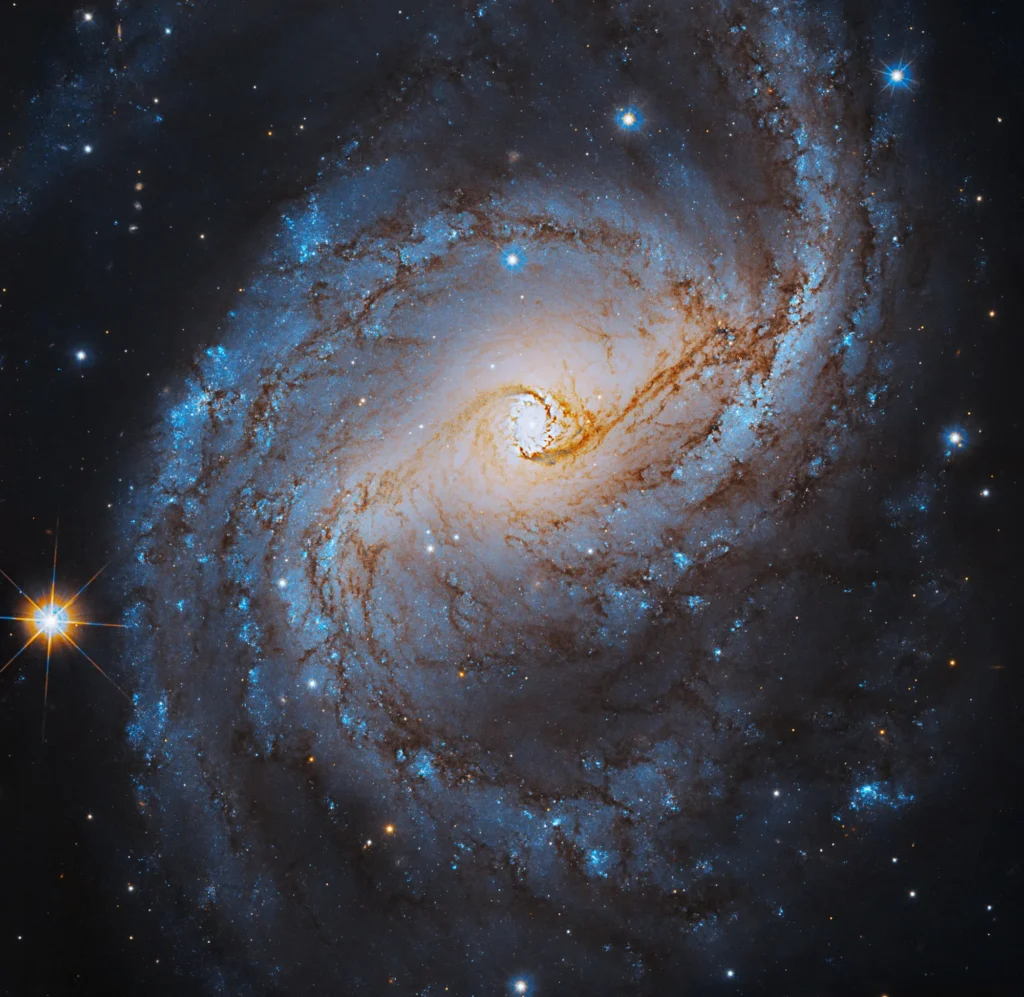Researchers working with the Hubble Space Telescope published a new image. It captures the galaxy NGC 6951.

NGC 6951 is located at a distance of 78 million light-years from Earth in the direction of the constellation Cepheus. It is a spiral galaxy with a bar. Hubble’s photo shows its expressive spiral arms, which are filled with many young stars and through which dark dust bands pass. They are swirling around the bright core of NGC 6951.
Galaxy NGC 6951 intrigues scientists with the history of its stars. The highest rate of star formation was observed about 800 million years ago. Then, for 300 million years, the galaxy was quiet before it began to give birth to new luminaries again. You can see dark red regions of turbulent gas surrounding bright blue star clusters in the Hubble image. The average age of the latter is about 200–300 million years, although older clusters up to a billion years old are also found in it.
Astronomers often attribute NGC 6951 to Seyfert galaxies emitting large amounts of infrared radiation. This activity is caused by a supermassive black hole located in its center. It is surrounded by a ring of stars, gas and dust with a diameter of about 3,700 light-years. Its age ranges from 1 to 1.5 billion, and stars are being born quite actively in it. Scientists believe that the gas for their formation comes through a bar acting as a kind of “fuel pipeline”. Up to 40% of the ring’s mass is accounted for by relatively new stars, which are less than 100 million years old.
NGC 6951 is also home to many supernovae. Over the past quarter century, up to six such events have been recorded in it. Therefore, astronomers continue to actively observe NGC 6951 in order to better understand the nature of these colossal explosions.
Earlier we talked about how James Webb found signs of “youthful maximalism” in young galaxies.
According to https://science.nasa.gov
Follow us on Twitter to get the most interesting space news in time
https://twitter.com/ust_magazine

